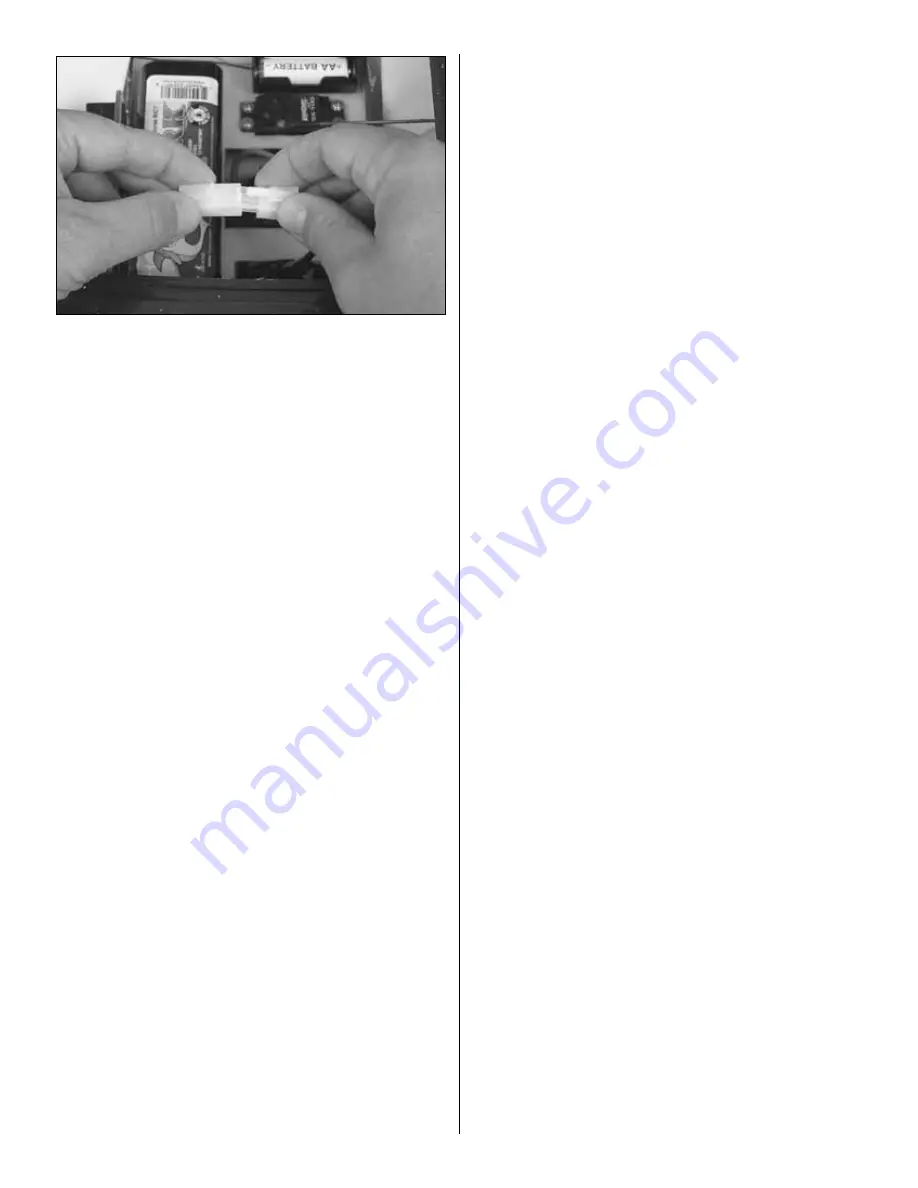
❏
2. Plug the battery pack into the boat’s ESC (Electronic
Speed Control) battery connector. Do not force them together;
they are designed to fit together only one way.
CHECK THE RADIO SYSTEM:
❏
1. Turn the power “ON” to the transmitter and receiver (in
that order). Put the cabin back in place and secure the latch.
❏
2. If the boat’s propeller begins to spin once power is
turned “ON”, make sure your transmitter is “ON” and simply
rotate the throttle trim knob located atop the transmitter until
it stops.
❏
3. Standing behind the boat with the radio system turned
“ON”, rotate the steering wheel of your transmitter to the left.
The back of the rudder should move towards the left. Rotate
the steering wheel of your transmitter to the right. The back of
the rudder should move towards the right. If this is not the
case, simply move the transmitter’s steering servo reverse
switch to the other position.
❏
4. Squeeze the trigger on the transmitter; this should
activate the propeller in a counter-clockwise motion. If this is
not the case, try moving the throttle servo reversing switch to
the other position. Pushing the trigger forward will activate
the propeller in a clockwise rotation; this is the “REVERSE”
feature and it can be used to either back out of precarious
water or slow the boat down quickly.
❏
5. The D/R knob located atop the transmitter is the steering
rate adjustment. Turning the knob to the right increases the
total movement of the rudder while turning it to the left
decreases the rudder movement.
❏
6. Turn the power “OFF” to your boat and then your
transmitter (always, in that order).
PLEASE READ BEFORE RUNNING
THE ATLANTIC HARBOR TUGBOAT:
•
NEVER
attempt to swim after a stalled or capsized boat!
Wait patiently for the wind currents to return the boat to
shore or use a tennis ball attached to the end of a fishing
rod to retrieve a stalled or capsized boat.
• It is dangerous to operate any R/C vehicle at any time that
there is not sufficient light.
• R/C models produce vibrations which
will
cause screws,
nuts, bolts, etc, on your model to become loose over time.
It is important to make sure that all hardware is secure
before operating your model.
•
The edges of the propeller are very sharp and can cut your
fingers
if you are not careful. At no time should you ever
attempt to stop the prop with your hand. In the event that weeds
become entangled in the propeller, turn the Atlantic Harbor
Tugboat’s power “OFF” before attempting to remove them.
•
CAUTION:
Your Atlantic Harbor Tugboat may take on small
amounts of water, especially when running in rough water
due to high winds or when making tight turns. Keep a roll
of paper towels handy and dry out the hull interior after
every run.
• Total run time of the Atlantic Harbor Tugboat is
approximately 10-15 minutes (assuming you begin with a
fully charged battery pack). When you notice a decrease in
power or sluggish steering response, it means the battery
pack is nearly drained and it’s time to head for shore. As
soon as the boat reaches shore, turn off the power to the
boat’s receiver and transmitter (in that order).
•
CAUTION: The motor may be hot!
Allow it to cool for a few
minutes before attempting to remove the battery pack.
• After running, store your Atlantic Harbor Tugboat with the
hatches opened to allow the interior to dry out completely.
If you fail to do this, it may result in corrosion of the
electronic components.
•
IMPORTANT:
If, for whatever reason your boat takes on a
large amount of water causing the radio equipment to get
wet, you must do the following immediately: Remove the
battery pack and radio equipment from the boat. Allow the
components to air dry completely before reassembling.
Reinstall the components and check for proper operation
before running the boat in water.
5


























